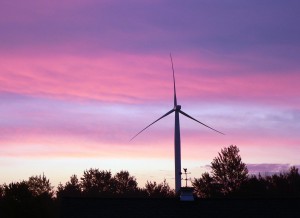The Mackinac Center for Public Policy issued another doomsday report recently, claiming that achieving Proposal 3’s 25% renewable electricity goal by 2025 would unleash economic Armageddon on our fair state, increasing bills hundreds of dollars annually.
The report follows a real analysis conducted by experts in energy and utility regulation that we released two weeks ago. That study says that moving to 25% clean energy would cost the average residential ratepayer 50 cents a month at the outset, and save them money in later years.
Those are two very different conclusions.
For guidance, you might read a third, independent report – the Michigan Public Service Commission’s most recent analysis. It found the cost of renewable electricity coming online in Michigan right now is far below comparable costs for more dirty, unsustainable coal power.
Additionally, it found that wind energy costs were dropping steadily, while the cost of coal delivered to Michigan jumped 71 percent in just the last four years.
So it seems like simple math would suggest that buying the cheaper power (wind energy) would cost you less than buying the expensive power from coal.
An examination of the Mackinac Center’s report explains the discrepancy.
A key assumption in the Mackinac Center report is the cost of wind energy. Wind energy will supply the lion’s share of the additional renewable energy we would need between 2015 and 2025 to reach the goals established in Proposal 3.
The Mackinac Center report is grounded in the wild and baseless contention that wind energy costs will somehow skyrocket to up to 4.5 times higher than the current signed wind contracts in Michigan.
As the Union of Concerned Scientists put it in its analysis of the Mackinac Center study:
The Mackinac Center analysis “… assumes levelized energy costs for wind that range from $149/MWh to $288/MWh in 2010. These costs are 1.5 to 3 times higher than the average cost of wind contracts in Michigan from 2009 to 2011 ($94/MWh) and as much as 4.5 times higher than the state’s most recent signed wind contracts ($61-$64/MWh), according to the Michigan Public Service Commission. (emphasis theirs)
“ …The use of indefensibly high wind cost assumptions extends through 2025 in both the average and high cost cases.”
Or, in plain English, the Mackinac Center report’s key assumption is garbage.
You can read the Scientists’ analysis and the back-and-forth between the Mackinac Center and the UCS analysis’ author and decide for yourself.
###
 The ill-advised Pure Michigan Right to Work advertisement is the latest in a string of questionable decisions that suggest the state and in particular, the Michigan Economic Development Corporation (MEDC) don’t understand the value of the brand they inherited.
The ill-advised Pure Michigan Right to Work advertisement is the latest in a string of questionable decisions that suggest the state and in particular, the Michigan Economic Development Corporation (MEDC) don’t understand the value of the brand they inherited.











